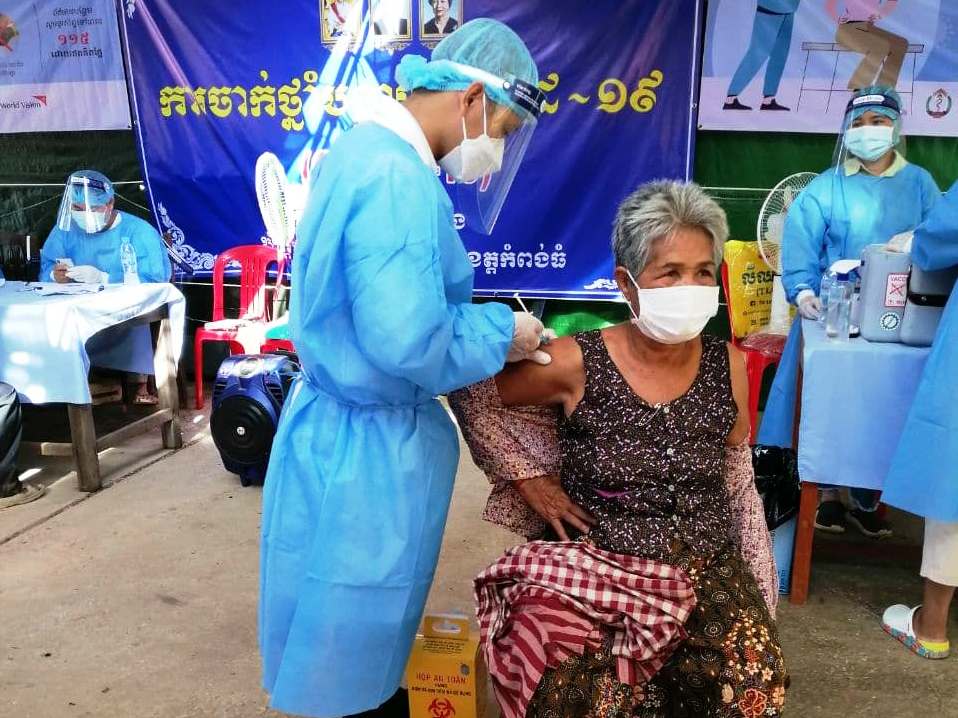
With reports of life returning to normal in Cambodia after a wide-reaching vaccination campaign against COVID-19, we spoke to Vira Tum, Executive Director of HelpAge Cambodia, to find out about the situation in the country and what challenges remain, despite the overall success.
We wanted to learn about the impact on older people and the key factors behind Cambodia’s achievement, and what other countries can learn from their experience. Here is what Vira told us:
Vaccine Coverage
In Southeast Asia, Cambodia is second only to Singapore for vaccine coverage. As of early September 2021, more than 95% of the target group of everyone over 18 years old had received at least the first dose of the vaccine, in a population of 16 million.
As for older people, 95% have received their first dose and 77% are fully vaccinated. The government initially recognized older people as being at the greatest risk and prioritized them in vaccine distribution.
Cambodia began vaccinating citizens and government workers in February 2021 using the Sinopharm vaccine from China before it had been approved by WHO. Cambodia’s relationship with China meant that many vaccines were donated by the Chinese government, in addition to those procured by the government.
Personally, I believe that the Cambodian government has done a great job and they started by identifying the group that was most at risk. Cambodia’s healthcare system is not advanced, but the government has established close collaboration with expert organizations, especially the WHO, in the fight against the pandemic. In addition, close control of the pandemic and timely investment in proven vaccines, no matter where they are produced, were considered top priorities to protect public health.
Information and Older People's Associations
HelpAge Cambodia implemented many activities in response to COVID-19 and was well-positioned when the vaccinations began to be administered in the country.
Firstly, we worked to disseminate information about vaccines amongst older people: about the effectiveness, side effects, how to get the vaccine, and where. We work with older people’s associations (OPAs) and spread information through them.
Secondly, we check the availability of vaccines locally and regularly call older people to inform them if vaccines are available near their place of residence, or in their district.
Thirdly, we provide OPAs small grants to cover costs for older people who have to travel to the vaccination site. This is especially important in rural areas, where they are not always within walking distance. To date, 41 OPAs have received mini-grants for transportation, allowing the poorest 500 older people to get vaccinated.
In Cambodia, the OPA model was replicated by the government in 2016 and covers the entire country. HelpAge Cambodia works with OPAs in several provinces in the country.
A Gap Between Urban and Rural Areas
Most of the information on vaccination is now provided in digital form, and older people, especially those living in rural areas, do not have access to the Internet.
I can confidently say that vaccines are more readily available in urban areas than in rural ones. Moreover, in rural areas, the vaccination programs can be less well organized. For example, people may gather in groups which would put them at risk.
However, older people have been recognized as a priority and it has been working. Not being an older person myself, I went to get vaccinated and can confirm that older people were invited out of line. I also brought my parents and parents-in-law to the capital for vaccination, and everything was very well organized at the vaccination site. However, my wife did not receive the vaccine in the capital, and there was a certain disorder in her spot.
Despite the general success, there is still some hesitancy towards vaccines among older people. The government procured several types of vaccines, most of which came from China, and no one knew about their quality.
To date, the kingdom of Cambodia has received a total of 29.5 million doses of vaccine from friendly countries and the World Health Organization’s COVAX Center, of which 26.8 million came from China. They have received two types of vaccines from China: Sinopharm and Sinovac.
There were various rumors about the quality of Chinese vaccines. Although they have now calmed down, we need more time to carry out an information campaign. We cannot force people to change their minds.
This article was originally published by HelpAge International. Interview recorded by Vitaliy Konovalov, Communications Manager, HelpAge International. More information on how Cambodia had such a successful vaccination program is provided in this article in the Diplomat.


